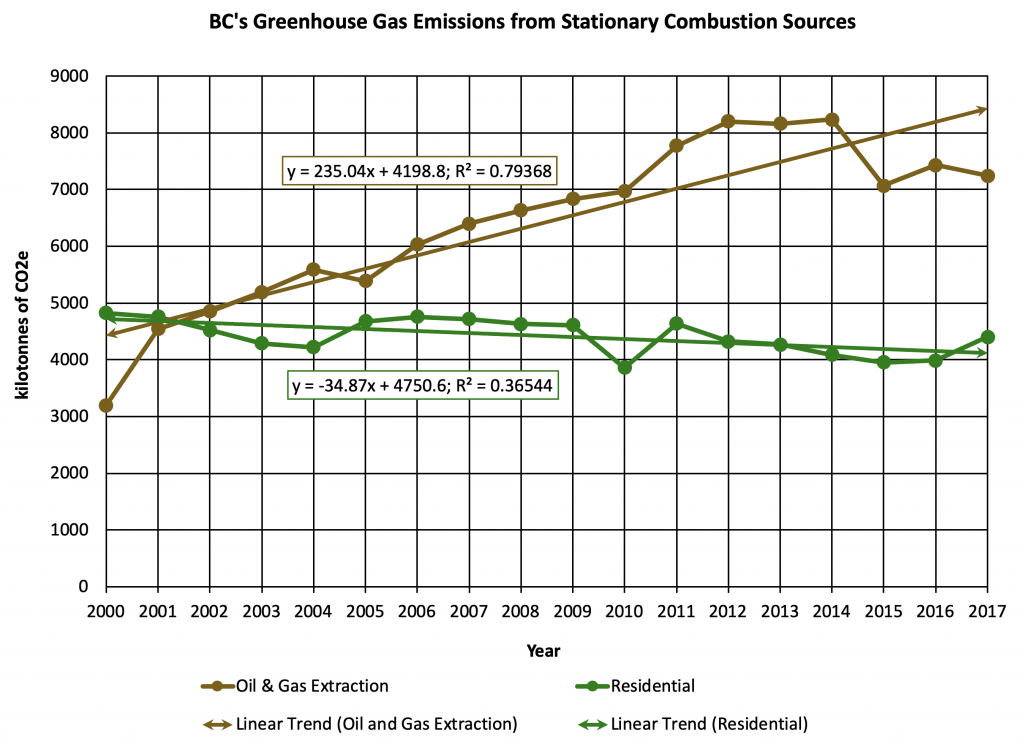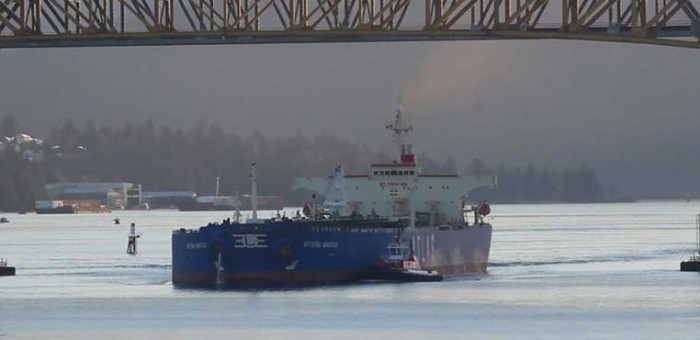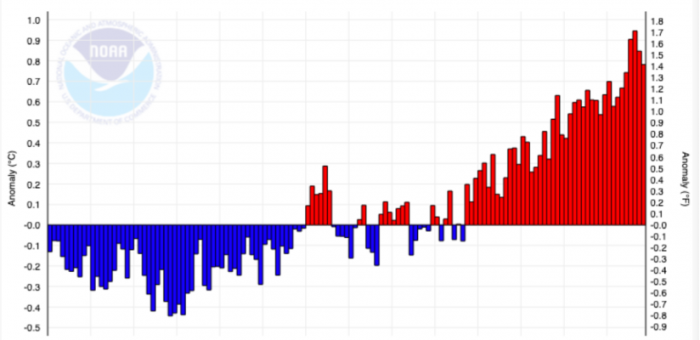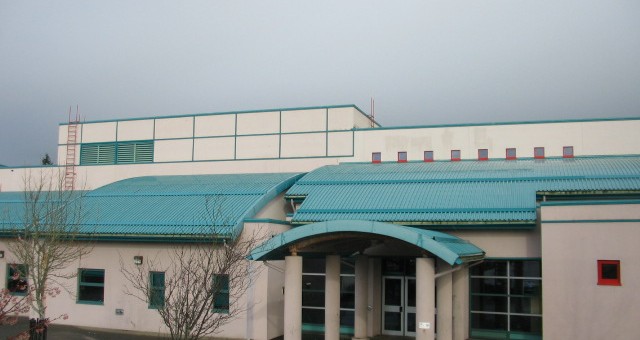BC NDP government empowered to revisit Trans Mountain pipeline conditions
Today the BC Court of Appeal ruled unanimously that the BC NDP government must reconsider the conditions of the environmental assessment certificate allowing the expansion of the Trans Mountain pipeline. This is an incredibly important ruling as it means that the BC government now has the opportunity, which the BC Greens expect them to take, to reexamine the nebulous environmental conditions put in place by the former B.C. Liberal government. As I’ve argued numerous times in the past, politics clearly trumped evidence in the decision-making process of the NEB approval for the Transmountain pipeline. British Columbia now has the opportunity to ensure our coastal regions are protected.
As we move forward I am looking for the BC environmental assessment process to now properly consider the many issues I raised during the fundamentally flawed NEB process.
Below is a copy of the press release my office released following the BC Court of Appeal ruling.
Media Statement
B.C. NDP government empowered to revisit Trans Mountain pipeline conditions
For immediate release
Sept. 17, 2019
VICTORIA, B.C. – Today’s B.C. Court of Appeal’s unanimous ruling that the NDP government must reconsider the conditions of the environmental assessment certificate allowing the expansion of the Trans Mountain pipeline opens a path for additional environmental protections.
“The court has shown yet again the many shortcomings of the environmental assessment process that leaves our province facing the unacceptable environmental impacts that an expansion of the Trans Mountain pipeline threatens to bring to our province,” B.C. Green Party Leader Dr. Andrew Weaver said. “The B.C. NDP government has a responsibility to revisit the conditions placed by the former B.C. Liberal government.
“The negative long-term economic impacts related to increased emissions and the risk of oil spills associated with the Trans Mountain pipeline are indisputable. And British Columbians are already shouldering the environmental costs from climate change by way of our depleted oceans, stressed forests, shallow rivers, and dwindling resource economy.
“Tripling the capacity of the existing pipeline from Alberta’s oilpatch to Burnaby would pose an even greater threat to our future. A spill would be devastating to our environment, our coastal economies, and our tourism and fishery industries. Furthermore, the seven-fold increase in tanker traffic would pose significant threats to British Columbia’s already endangered Southern Resident Killer Whales. We ask again: Is the federal government ready to justify to Canadians why it is willing to herald the death knell of this iconic species?
“British Columbia’s economic future lies in the innovative, creative industries that are leading global economic growth, not in continued fossil-fuel infrastructure development that created the climate challenges that our communities and resource-based industries are struggling to cope with today.
-30-
Media contact
Macon L.C. McGinley | Press Secretary
B.C. Green Caucus
+1 250-882-6187 | macon.mcginley@leg.bc.ca
BC’s greenhouse gas emissions continue to climb in 2017
The BC NDP government released the 2017 greenhouse gas emissions data today. To no one’s surprise, BC’s 2017 GHG emissions increased by 1.2% from 2016 to 2017 to a total 64.5 million tonnes (Mt) of carbon dioxide-equivalent (CO2e), or roughly 13.1t CO2e per capita. Leading the way was a year-over-year 29% increase in emissions from natural gas flaring. Of course, this too is unsurprising as there is a glut of natural gas in the market and the predominant value from the drilling activity in the northeastern BC’s Montney Formation is in the liquids. A significant fraction of these liquids are shipped to Alberta where they are mixed with bitumen to form dilbit, the less viscous substance that can flow through pipelines. The gas, for which there is no market (and for which we have slashed royalty payments to the province and so literally give away), can be pumped back underground or burnt on site (flaring). And all of these activities are subsidized by the BC taxpayer to the tune of billions of dollars.

As I’ve outlined numerous times over the years on this blog site, with BC’s expansion into LNG, I do not believe the BC NDP government will be able to deliver a plan that will cut GHG emissions to 40% below 2007 levels by 2030. The premier claims that he will. I remain unconvinced.
Nevertheless, I remain very supportive of the CleanBC economic plan, which the BC Greens played an integral role in developing. However, I fear that it may be all for naught. As you will see in the above graph, the trend in emissions from the natural gas sector is on the rise, even without a single LNG facility in place. The trend in emissions from residential buildings is on the decline as we would hope.
Do we believe that it is fair for British Columbians to be burdened with the requirements and cost of reducing GHG emissions while we continue to offer subsidies and corporate welfare to the oil and gas sector? I think not for we have to work even harder as individuals to curb our emissions to account for the continued growth of emissions in the oil and gas sector.
Below I reproduce the media statement that I issued in response to government’s release of these new greenhouse gas emissions data.
Media Release
BC’s greenhouse gas emissions continue to climb
For immediate release
September 9, 2019
VICTORIA, B.C. – At a time when citizens are calling on their governments to ambitiously decarbonize – and every international panel has stated doing so is the only way to meet our agreed upon international climate targets- the provincial government’s recently released greenhouse gas data shows that BC, as of 2017, has failed to correct its emissions trajectory.
The data released today show total emissions in British Columbia increased 1.2 per cent from 2016 to 2017 to a total 64.5 million tonnes (Mt) of carbon dioxide-equivalent (CO2e), roughly 13.1t CO2e per capita. Emissions are now back up to 2007 levels when 64.8 Mt of CO2e was emitted, despite the BC NDP government last year committing to reduce emissions by 40% from this amount by the year 2030.
“We designed the CleanBC economic plan to start to tackle this challenge. Now that it is being implemented I expect we’ll start to see some slight emissions reductions, but it is clear we have a long way to go and we need to remain diligent in our commitment to our reduction targets,” said Dr. Andrew Weaver, leader of the B.C. Greens. “The timing of the release of these new emissions numbers is also particularly ironic as it comes on the heels of British Columbia announcing it’s sending a delegation to Japan to tout the potential export of highly subsidized LNG. As I’ve identified numerous times in the past, we cannot expand investment in the fossil fuel sector and hope to reduce our domestic emissions to promised levels.”
“British Columbians say they want to fight climate change. Looking at this data, they should be enraged that the lack of regulations in the oil and gas sectors means their footprint is two to three times larger than that of the average person living in the UK, Norway, New Zealand, Denmark and Sweden. The average British Columbia emits about 29 times the CO2e compared to an average citizen in Bangladesh.
“Our individual carbon footprint per British Columbian barely come in under our neighbours to the south, by a measly 12%. These numbers show us that we are not the concerned environmental stewards that we think we are, and it is because we have had governments that fail to regulate industry and fail to implement a vision for a new, green economy rooted in sustainable practices.”
This summer, government released its strategic climate risk assessment for British Columbia . Analyzing the climate risks likely to face British Columbia between 2040 and 2059, the report stated:
“British Columbia is already experiencing the effects of global climate change: average temperatures are increasing, sea levels are rising, and variable and extreme weather is becoming more frequent. Scientists expect these changes to accelerate and intensify in the years ahead, creating risks to society, natural resources, and ecosystems.”
British Columbia is contributing to global emissions rising when they need to be falling dramatically. The UN Intergovernmental Panel on Climate Change (IPCC) has repeatedly reported that carbon pollution needs to be cut by 45 percent by 2030 if we are to stay below 1.5C warming, beyond which even half a degree will significantly worsen climate change impacts and drag hundreds of millions of people into poverty.
“Now is not the time to protect the status quo or invest billions in expanding the oil and gas sector,” Weaver said. “Now is the time to rise to the challenge before us. Climate change is an immense risk if we don’t do anything about it. But it is also an incredible opportunity if we act. We can- and must- build cleaner and healthier communities and vibrant, resilient, sustainable economies.”
CleanBC was developed in collaboration with the BC NDP government and supports the commitment in the Confidence and Supply Agreement to implement climate action to meet B.C.’s emission targets.
Quick Facts
In 2016, the most recent global data available from the International Energy Agency, the United Kingdom’s per capita emissions were 5.65t CO2e, New Zealand’s were 6.45t CO2e, Norway’s were 6.78t CO2e, Denmark’s were 5.84t CO2e and Sweden’s were 3.83t CO2e. For comparison, per capita emissions in Bangladesh were 0.45t CO2e and in the United States were 14.95t CO2e.
This puts the average British Columbian’s carbon footprint 2.3, 2.0,1.9, 2.2 and 3.4 times larger than that of the average person living in the UK, Norway, New Zealand, Denmark and Sweden, respectively.
-30-
Media contact
Macon L.C. McGinley, Press Secretary
B.C. Green Caucus
+1 250-882-6187 |macon.mcginley@leg.bc.ca
BC Green caucus celebrates equitable access to menstrual products for students
Great Victoria School District officially launched its initiative today to provide free access to menstrual products for students. Ensuring equitable access to menstrual products is an important issue long advocated for by groups like the United Way Period Promise campaign, and I am proud to have played a part in helping move this initiative along.
As you will see from my Question Period exchange the Minister of Social Development and Poverty Reduction:
“We all expect when we enter a public washroom that toilet paper is readily available and free. Why that isn’t the case for menstrual products is a very good question. One, I suspect, that if men had a menstrual cycle, we wouldn’t be asking today.“
Below I reproduce our media statement celebrating the BC Government and Victoria School District’s announcement.
Media Statement
BC Green caucus celebrates equitable access to menstrual products for students
For immediate release
September 5, 2019
VICTORIA, B.C. – Today the BC Green caucus is celebrating the official launch of the Greater Victoria School District’s initiative to provide free access to menstrual products for its students.
“Ensuring equitable access to menstrual products is an important issue long advocated for by groups like the United Way Period Promise campaign, and I am proud to have played a part in helping move this initiative along,” said B.C. Green Party Leader MLA Andrew Weaver.
In March, Weaver asked Minister of Social Development and Poverty Reduction, as well as the Minister of Education, how the upcoming poverty reduction strategy will ensure that all children and youth have equal access to menstrual products. One month later, government announced it would require all public schools in the province to provide free menstrual products in school washrooms.
“In a minority government, a key part of our role is to bring new ideas to the table, advocate for great ideas already out there, and work with government to inspire them to act. In this case, we are thrilled at the outcome,” Weaver said. “No student should feel restricted in their ability to participate in lessons or sports because they lack access to a basic need.
“Protecting children from harm -whether it be stigma or abuse- and advancing gender equity have been two areas in which the B.C. Green Caucus and B.C. NDP clearly agree. Making schools and society safer and more equitable for all of our children is a nonpartisan pursuit that unites British Columbians.”
A B.C. Green Caucus bill amending the Residential Tenancy Act garnered tripartisan support this May and passed with full votes from the NDP and Liberals. The bill provides renters who are victims of violence associated with their home, or whose children are victims of violence, to break their fixed term lease and seek safety.
Also in May, B.C. Greens, alongside stakeholders and LGBTQ2+ rights advocates, tabled legislation that would ban the abusive practice of conversion therapy.
“We hope government continues to show support for the children of British Columbia this fall by working with our caucus to ban so-called conversion therapy,” Weaver said.
-30-
Media contact
Macon L.C. McGinley | Press Secretary
B.C. Green Caucus
+1 250-882-6187 |macon.mcginley@leg.bc.ca
Trans Mountain pipeline faces six legal challenges; court rejects all environmental appeals
The Federal Court of Appeal ruled today to allow six of the twelve legal challenges against the Trans Mountain pipeline to proceed. These challenges are limited to the adequacy of the consultation with Indigenous Peoples and related issues. Below I reproduce our media statement in response to the ruling from the Federal Court of Appeal.
Media Statement
Trans Mountain pipeline faces six legal challenges; court rejects all environmental appeals
For immediate release
September 4, 2019
VICTORIA, B.C. – The Federal Court of Appeal ruled today to allow six of the twelve legal challenges against the Trans Mountain pipeline to proceed. These challenges are limited to the adequacy of the consultation with Indigenous Peoples and related issues.
“It is significant that that the courts will once again hear from First Nations about the consultation process,” said said Dr. Andrew Weaver, leader of the B.C. Greens. “Honouring the reconciliation process in Canada must require more than after the-fact engagement about a project the government always intends to approve. I am disappointed that the significant environmental risks that this project poses will not be taken up by the courts.
“The B.C. Green Caucus will continue its campaign to pressure government and engage the public as well. Because we know that continuing to invest in fossil fuel infrastructure is not just fiscally irresponsible, it is an economic liability. The Bank of Canada recently warned about future stranded assets in the oil and gas sector due to climate-related risk. This means TMX will only turn a profit if all global efforts to combat climate change by transitioning away from fossil fuels to clean alternatives fail.
“So is the federal government wishing for a failed global climate change strategy? The Liberals say they will use any profits from the TMX to fund Canada’s transition to a cleaner-energy economy. That is like saying profit from the Titanic’s maiden voyage will be used to fund remodeling the ship. They are actively working to undermine the very thing they say they are working to improve.
“We can do better than banking on a future that continues to rely on fossil fuels decades into a climate disaster. And we can fund a clean energy economy without sacrificing our children’s environmental future.”
-30-
Media contact
Macon L.C. McGinley | Press Secretary
B.C. Green Caucus
+1 250-882-6187 |macon.mcginley@leg.bc.ca
Governments have choices to make: subsidize LNG, remove bridge tolls or support public education
Children are starting the school year under a shadow of labour uncertainty. With the first day of the 2019-2020 academic year now behind us, teachers, children and their parents are wondering if and when contract negotiations will conclude or whether they will once more break down and lead to another strike.
Let’s be very clear, governments have choices to make. In the lead up to the 2017 election campaign, the BC Greens made public education our top priority. Our fully costed platform offered more than $4 billion in new funds over four years in support of this priority.
The BC NDP’s priorities are different. They have so far committed billions of dollars in subsidies to the oil and gas sector in an attempt to deliver what Christy Clark couldn’t — a single LNG facility. They have committed billions to build the Site C dam whose electricity will be sold at a massive loss to this single LNG provider. And they decided to forego billions of dollars of future revenue by removing the tolls on the Port Mann and Golden Ears bridges.
The BC Green 2017 platform promised to:
“Increase funding for schools, beginning in 2017/18 at $220 million and rising to $1.46 billion in 2020/21, to allow schools and school districts to invest in every child and prepare students for the 21st century economy, and to invest in innovation and technology. This is in addition to the $330 million committed by the BC Liberals to address the recent court ruling on class size.”
Public education is the foundation of any modern society. The BC Green party believes fundamentally in the importance of intergenerational equity and a preventative rather than reactive approaches to problem solving. For example, you will hear a lot about the struggles with the fentanyl crisis and young adults. Governments are good at funding “harm reduction projects” (reactive) but often don’t realize that prevention is just as critical. How many of our social problems today have arisen as a direct consequence of children growing up over the last dozen or so years without access to the services they needed to succeed (as these services were often the first casualties of the cuts to public education)?
The data from Statistics Canada are also very clear. BC Teachers are some of the lowest paid in the country. BC’s starting teacher wage is the second lowest in Canada (behind Quebec) and even after 10-15 years of experience, our BC teachers remain well behind most of the rest of Canada in terms of compensation. This wage gap is even more significant when one considers the cost of living in British Columbia, and in particular its urban areas, relative to the rest of the country. How can we expect to attract and retain the best and brightest to the profession if we are not willing to compensate them accordingly?
The BC Green public education platform extended beyond substantively increasing compensation for teachers and improving the support services for teachers and students. We further promised to:
- Provide $10 million per year to restore funding for adult secondary education upgrading and language training
- Direct $35 million into nutrition and physical activity programs to promote learning readiness, and improve student health.
- Invest $140 million over three years to train teachers to deliver the new curriculum.
- Work with Indigenous leaders, teachers, universities and colleges to develop policies and strategies to attract the brightest and best to the profession, and support recruitment. Special attention will be paid to increasing the number of Indigenous teachers and to incorporating more content on Indigenous culture into the curriculum.
- Review the funding model for the K-12 education system with a view to ensuring equitable access for students. This will address targeting funding to schools with the greatest need and increasing local autonomy regarding funding priorities and distribution.
Imagine my surprise when I found out last spring that government was putting forth some of essentially the same proposals in contract negotiations that the former government did in 2014. In particular, the BC government tabled language regarding larger maximum class sizes and fewer specialty teachers. On May 27, 2019 I rose in the legislature during Question Period to ask the Minister of Education what he was thinking in doing this. I further asked what the Minister thought this would do to the morale of B.C. teachers given that starting in 2002 and culminating in the landmark Supreme Court of Canada decision on November 10, 2016, the BCTF fought hard to restore provisions regarding their ability to bargain class size and composition. In fact, the teacher’s had historically given up wage increases in order to ensure class size and compensation language was included in collective agreements.
Unfortunately, while government has changed, labour uncertainty and unrest in the public education sector continues.
Back in 2014, I wrote extensively about the then labour dispute between the BCTF and the BC Liberal government. It began with a detailed piece offering a path forward for BC public education. A quick keyword search of this site with “BCTF” reveals numerous additional posts discussing mediation, arbitration, the government’s negotiating tactics and myriad other issues.
In my April 2015 second reading speech to Bill 11 – The Education Statutes Amendment Act, seven months after the end of the last teachers’ strike, I provided a more extensive analysis of my views on the importance of public education. Bill 11 aimed at unilaterally allowing government control over the professional development of teachers, and empowering government to issue directives to school boards that they would be bound to follow. In that speech I stated:
At the end of the strike last fall the government spoke about “an historic six-year agreement…which means five years of labour peace ahead of us.” Rather than viewing this as five years of simmering anger waiting to boil over when the negotiations next begin, we should be capitalizing on this time to envision bold new ways of ensuring our educational system is sustainable.
This includes teachers being fairly compensated and adequately supported with properly funded curriculum and learning resources. Such support must include sincere and meaningful class size and composition discussions and support that recognizes that teacher burnout affects us all. It must include reinvigorating our educational infrastructure and ensuring that children have textbooks and access to learning materials.
On Thursday the B.C. Court of Appeal will release its decision concerning the rights of teachers to negotiate conditions around class size and composition. Rather than allowing this to serve as a catalyst to incite increased tension between the BCTF and the government, perhaps both parties will recognize the opportunities that will arise from mutual collaboration, no matter what the Court of Appeals decision is.
For example, perhaps there is a compromise on class size and composition negotiations. Why don’t the BCTF and the B.C. government both agree, for example, that the best place to negotiate class size and composition is at the local school district level?
Rereading my “path forward” and “Bill 11” posts reminds me of how little has changed since the BC NDP have taken over from the BC Liberals. When it comes to public education, the BC Liberals and the BC NDP appear to be two sides of the same coin albeit with different colours.
To conclude, governments make choices all the time as to where to invest public resources. The BC Greens made public education ($4.022 billion over 4 years) our top priority and we remain committed in this regard.
As I mentioned at the start, the BC NDP’s priorities are different. They have so far committed billions of dollars in subsidies to the oil and gas sector in an attempt to deliver what Christy Clark couldn’t — a single LNG facility. They have committed billions to build the Site C dam whose electricity will be sold at a massive loss to this single LNG provider. And they decided to forego billions of dollars of future revenue by removing the tolls on the Port Mann and Golden Ears bridges.
Government’s make choices. And now you see what those choices are.






